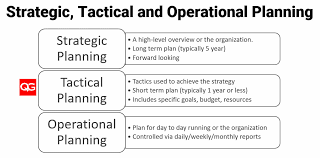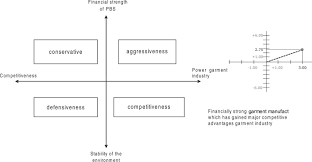6 Tips for Effective Quantitative Decision Making
- Break down the problem into manageable parts and identify key variables that will impact the decision.
- Utilize data analysis tools to uncover trends and relationships between variables.
- Develop an appropriate quantitative model to analyze the data and make decisions based on it.
- Evaluate different scenarios to measure the potential outcomes of each decision before making a final choice.
- Monitor results over time to ensure that decisions are producing desired outcomes and make adjustments if necessary.
- Make sure all stakeholders understand the process used in making decisions, as well as its implications for their roles in the organization or project
Break down the problem into manageable parts and identify key variables that will impact the decision.
Quantitative decision making is an essential skill in today’s fast-paced world. It involves using mathematical and statistical models to analyze data and make informed decisions. However, the process of making a quantitative decision can be overwhelming, particularly when dealing with complex problems. That’s where breaking down the problem into manageable parts and identifying key variables comes in handy.
Breaking down a problem into manageable parts allows us to focus on one aspect of the problem at a time. This makes it easier to understand each part of the problem and identify any potential roadblocks or issues that may arise. By breaking down the problem, we can also prioritize which parts are most critical to solving the problem.
Identifying key variables is also crucial in quantitative decision making. These are the factors that will have the most significant impact on the outcome of our decision. By identifying these variables, we can focus our attention on analyzing them more closely and better understand how they affect our decision.
For example, let’s say you are trying to decide which car to buy. Breaking down this decision into manageable parts could involve looking at different aspects of each car such as fuel efficiency, safety ratings, price, and reliability. Identifying key variables could include analyzing how much you drive each day or week, how much you’re willing to spend on gas or maintenance costs, and what safety features are most important to you.
By breaking down a complex decision into smaller parts and identifying key variables, we can make informed decisions that are backed by data-driven analysis. This approach helps us avoid being overwhelmed by too much information while ensuring that we consider all relevant factors before making a final decision.
Utilize data analysis tools to uncover trends and relationships between variables.
Quantitative decision making involves using data and statistical analysis to make informed decisions. In order to make the most accurate decisions possible, it is important to utilize data analysis tools to uncover trends and relationships between variables.
Data analysis tools such as Excel, SPSS, R, and Python can be incredibly powerful when used correctly. These tools allow you to input large amounts of data and quickly analyze that data for trends and relationships. By doing so, you can identify patterns in the data that may not be immediately apparent through simple observation.
For example, a business owner might use data analysis tools to analyze sales data from the past year. They could look for trends in sales by product or by region, identify which products are selling well and which are not, and determine which regions are performing better than others.
Another example might be a healthcare provider analyzing patient data to identify risk factors for certain diseases or conditions. By analyzing large amounts of patient data, they can identify patterns that may not have been obvious through simple observation.
In both cases, utilizing data analysis tools allows decision makers to make more informed decisions based on quantitative evidence rather than simply relying on intuition or guesswork.
In conclusion, utilizing data analysis tools is an essential component of quantitative decision making. By uncovering trends and relationships between variables through statistical analysis, decision makers can make more informed decisions based on quantitative evidence rather than simply relying on intuition or guesswork.
Develop an appropriate quantitative model to analyze the data and make decisions based on it.
Quantitative decision making is a process of making decisions based on numerical data and analysis. It involves developing a quantitative model to analyze the data and make decisions based on it. This approach is commonly used in business, finance, and other fields where data analysis plays a critical role in decision making.
Developing an appropriate quantitative model is essential to making effective decisions. The model should be tailored to the specific situation and take into account all relevant variables. For example, if you are trying to decide whether to invest in a particular stock, you would need to consider factors like the company’s financial performance, market trends, and other economic indicators.
Once the model has been developed, it can be used to analyze the data and make informed decisions. This may involve using statistical tools like regression analysis or simulation modeling to predict future outcomes based on historical data.
One example of quantitative decision making is in healthcare management. Hospital administrators may use a quantitative model to analyze patient data such as hospitalization rates, readmission rates, and mortality rates. By analyzing this data, administrators can identify areas for improvement and make informed decisions about resource allocation and quality improvement initiatives.
In conclusion, developing an appropriate quantitative model is essential for effective decision making. By analyzing numerical data using statistical tools and models, we can make informed decisions that are grounded in evidence-based analysis rather than intuition or guesswork.
Evaluate different scenarios to measure the potential outcomes of each decision before making a final choice.
Quantitative decision making involves using data and mathematical models to make informed decisions. One important tip for successful quantitative decision making is to evaluate different scenarios to measure the potential outcomes of each decision before making a final choice.
Evaluating different scenarios allows you to consider a range of possibilities and potential outcomes, which can help you make a more informed decision. This method involves identifying all the possible options, evaluating the pros and cons of each option, and then measuring the potential outcomes of each choice.
For example, suppose you are considering investing in a new business venture. You could evaluate different scenarios by considering various factors such as market trends, competition, and financial risks. By measuring the potential outcomes of each scenario, you can determine which option has the best chance of success.
Another example could be when deciding on a new product launch strategy. By evaluating different scenarios such as pricing strategies, marketing campaigns, and distribution channels, you can determine which strategy is most likely to result in the desired outcome.
In conclusion, evaluating different scenarios is an essential step in quantitative decision making. It allows you to consider all possible options and weigh their potential outcomes before making a final choice. This approach can help minimize risks and increase your chances of success in any decision-making process.
Monitor results over time to ensure that decisions are producing desired outcomes and make adjustments if necessary.
Quantitative decision making is an important process that involves using data and statistical analysis to make informed decisions. It is a method that is commonly used in business, finance, and other fields where accurate decision making is critical. One important tip for those using quantitative decision making is to monitor results over time to ensure that decisions are producing desired outcomes and make adjustments if necessary.
Monitoring results over time is crucial because it allows you to see how your decisions are affecting the outcome of your project or business. By keeping track of the results, you can identify any issues or problems early on and take corrective action before they become major problems. This can save you time, money, and resources in the long run.
For example, let’s say you are using quantitative decision making to determine which marketing campaign is most effective for your business. You analyze data from various campaigns and choose one that appears to be the most successful. However, if you do not monitor the results of this campaign over time, you may not realize that it’s not producing the desired outcomes. By monitoring the results regularly, you can identify any issues or problems early on and make adjustments as necessary.
In conclusion, monitoring results over time is an essential part of quantitative decision making. It allows you to see how your decisions are affecting your business or project and make adjustments if necessary. By doing so, you can ensure that your decisions are producing the desired outcomes and achieve success in your endeavors.
Make sure all stakeholders understand the process used in making decisions, as well as its implications for their roles in the organization or project
When it comes to making decisions, it is important to involve all stakeholders in the process. This means not only seeking input from everyone who will be affected by the decision, but also ensuring that all stakeholders understand the process used in making decisions and its implications for their roles in the organization or project.
One key aspect of this is transparency. By making sure that everyone involved understands how decisions are being made and what factors are being considered, you can help build trust and buy-in from all stakeholders. This can lead to better decision-making outcomes, as well as a more cohesive and productive team.
Another benefit of involving all stakeholders in the decision-making process is that it can help identify potential issues or concerns early on. By soliciting feedback from everyone involved, you can surface any potential roadblocks or challenges before they become major problems.
Ultimately, effective decision-making requires a collaborative approach that involves all stakeholders. By ensuring that everyone understands the process used in making decisions and its implications for their roles, you can build trust, improve outcomes, and create a more productive team.




